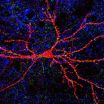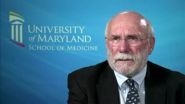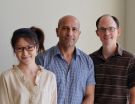Mechanism that repairs brain after stroke discovered
2014-10-10
(Press-News.org) A previously unknown mechanism through which the brain produces new nerve cells after a stroke has been discovered at Lund University and Karolinska Institute in Sweden. The findings have been published in the journal SCIENCE.
A stroke is caused by a blood clot blocking a blood vessel in the brain, which leads to an interruption of blood flow and therefore a shortage of oxygen. Many nerve cells die, resulting in motor, sensory and cognitive problems.
The researchers have shown that following an induced stroke in mice, support cells, so-called astrocytes, start to form nerve cells in the injured part of the brain. Using genetic methods to map the fate of the cells, the scientists could demonstrate that astrocytes in this area formed immature nerve cells, which then developed into mature nerve cells.
"This is the first time that astrocytes have been shown to have the capacity to start a process that leads to the generation of new nerve cells after a stroke", says Zaal Kokaia, Professor of Experimental Medical Research at Lund University.
The scientists could also identify the signalling mechanism that regulates the conversion of the astrocytes to nerve cells. In a healthy brain, this signalling mechanism is active and inhibits the conversion, and, consequently, the astrocytes do not generate nerve cells. Following a stroke, the signalling mechanism is suppressed and astrocytes can start the process of generating new cells.
"Interestingly, even when we blocked the signalling mechanism in mice not subjected to a stroke, the astrocytes formed new nerve cells", says Zaal Kokaia.
"This indicates that it is not only a stroke that can activate the latent process in astrocytes. Therefore, the mechanism is a potentially useful target for the production of new nerve cells, when replacing dead cells following other brain diseases or damage."
The new nerve cells were found to form specialized contacts with other cells. It remains to be shown whether the nerve cells are functional and to what extent they contribute to the spontaneous recovery that is observed in a majority of experimental animals and patients after a stroke.
A decade ago, Kokaia's and Lindvall's research group was the first to show that stroke leads to the formation of new nerve cells from the adult brain's own neural stem cells. The new findings further underscore that when the adult brain suffers a major blow such as a stroke, it makes a strong effort to repair itself using a variety of mechanisms.
The major advancement with the new study is that it demonstrates for the first time that self-repair in the adult brain involves astrocytes entering a process by which they change their identity to nerve cells.
"One of the major tasks now is to explore whether astrocytes are also converted to neurons in the human brain following damage or disease. Interestingly, it is known that in the healthy human brain, new nerve cells are formed in the striatum. The new data raise the possibility that some of these nerve cells derive from local astrocytes. If the new mechanism also operates in the human brain and can be potentiated, this could become of clinical importance not only for stroke patients, but also for replacing neurons which have died, thus restoring function in patients with other disorders such as Parkinson's disease and Huntington's disease", says Olle Lindvall, Senior Professor of Neurology.
INFORMATION:
ELSE PRESS RELEASES FROM THIS DATE:
2014-10-10
A novel technique which reduces image degradation caused by respiratory motion during a PET scan was developed in a recent study at the University of Eastern Finland. PET scanning is routinely used to detect cancer and heart conditions. The new technique presented in the PhD thesis of Tuomas Koivumäki, MSc (Tech.), is based on bioimpedance measurement and it allows for image reconstruction at a specific phase of the patient's breathing pattern. This, in turn, makes it possible to reduce image degradation caused by motion.
In the future, the newly developed technique ...
2014-10-10
New Orleans, LA – A special study using data from LSU Health New Orleans School of Public Health's Louisiana Tumor Registry has found that colorectal cancer incidence rates in the Louisiana Acadian parishes are among the highest in the United States. This study appears to be the first to identify a high rate of cancer in a large, regional, US founder population, raising the possibility of a genetic predisposition. Alternatively, an unidentified, robust environmental risk factor may be present. The paper is published online in Clinical and Translational Gastroenterology, ...
2014-10-10
A small, "empty" space teeming with activity: a synapse is a complex structure where the neural (electrical) signal from the presynaptic neuron, as it travels towards its target –a muscle, a gland or another neuron – turns into a chemical signal capable of crossing the synaptic space before becoming electrical again once on the other side. A synapse is a "dynamic" space not only because of the endless work that goes on there, but also for its ability to change its action over time (synaptic plasticity) as a result of either normal physiological processes (e.g., ...
2014-10-10
The sanitation intervention delivered under the terms of the Government of India's Total Sanitation Campaign—the world's largest sanitation initiative—provided almost 25 000 individuals in rural India with access to a latrine. However, it did not reduce exposure to faecal pathogens or decrease the occurrence of diarrhoea, parasitic worm infections, or child malnutrition.
"The programme is effective in building latrines, but not all households participate"*, explains lead author Professor Thomas Clasen from Emory University, Atlanta, USA and the London School ...
2014-10-10
VIDEO:
Dr. Myron M. Levine, Director of the Center for Vaccine Development at the University of Maryland School of Medicine describes the Ebola vaccine testing taking place in Mali, West Africa.
Click here for more information.
Professor Myron M. Levine, MD, Director of the Center for Vaccine Development (CVD) at the University of Maryland School of Medicine (UM SOM), and UM SOM Dean E. Albert Reece MD, PhD, MBA, announced today that the CVD, in conjunction with its sister institution, ...
2014-10-10
LA JOLLA, CA – October 9, 2013 - Scientists at The Scripps Research Institute (TSRI) have created a synthetic molecule that mimics "good" cholesterol and have shown it can reduce plaque buildup in the arteries of animal models. The molecule, taken orally, improved cholesterol in just two weeks.
This research, published in the October issue of Journal of Lipid Research, points scientists toward a new method for treating atherosclerosis, a condition where plaque buildup in the arteries can cause heart attacks and strokes.
"Atherosclerosis is the number one killer ...
2014-10-10
Large numbers of fish will disappear from the tropics by 2050, finds a new University of Britsh Columbia study that examined the impact of climate change on fish stocks. The study identified ocean hotspots for local fish extinction but also found that changing temperatures will drive more fish into the Arctic and Antarctic waters.
Using the same climate change scenarios as the Intergovernmental Panel on Climate Change, researchers projected a large-scale shift of marine fish and invertebrates. In the worst-case scenario, where the Earth's oceans warm by three degrees ...
2014-10-10
Using a recently developed biomarker of aging known as an epigenetic clock, UCLA researchers working closely with a German team of investigators have found for the first time that obesity greatly accelerates aging of the liver. This finding could explain the early onset of many age-related diseases, including liver cancer, in obese subjects
Although it had long been suspected that obesity ages a person faster, it hadn't been possible to prove the theory, said study first author Steve Horvath, a professor of human genetics at the David Geffen School of Medicine at UCLA ...
2014-10-10
The ideal cost per dose for a new meningitis vaccine ranges from £3 up to a possible £22 only if several vaccine favourable factors all coincide, according to research which has analysed how to maximise the reduction in cases while making a new vaccination programme cost-effective.
Bexsero is the first vaccine to broadly protect against meningitis B disease, but research now suggests the Government would need to negotiate a considerable reduction in the £75 list price in order to provide the same value for money as other programmes in the NHS.
In March ...
2014-10-10
Proteins regulating cell division determine tumour growth. Ongoing clinical trials are currently studying inhibitors for two of these proteins, Cdk4 and Cdk6, targeting several types of cancer, such as breast cancer, lung cancer and leukaemia. The Cell Division and Cancer Group at the Spanish National Cancer Research Centre (CNIO), led by Marcos Malumbres, has discovered the molecular mechanism behind the interaction of these proteins. Researchers also demonstrated in mice that the simultaneous inhibition of both molecules is more effective than the individual inhibition. ...
LAST 30 PRESS RELEASES:
[Press-News.org] Mechanism that repairs brain after stroke discovered



